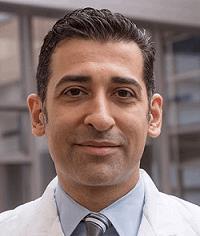Biosimilars In Hospital Settings: What You Need To Know
 A few months ago, Biosimilar Development published an interview with Dave Picard, VP of biosimilars and injectables for AmerisourceBergen, who shared his predictions on how biosimilars will fit into hospital distribution models. Based on the popularity of that article, we decided to reach out to another leading U.S. drug wholesaler for their perspective on the topic. In this Q&A, Chadi Nabhan, M.D., VP and chief medical officer of Specialty Solutions at Cardinal Health, discusses biosimilar uptake at the hospital level — and how biosimilar companies should be planning their distribution strategies.
A few months ago, Biosimilar Development published an interview with Dave Picard, VP of biosimilars and injectables for AmerisourceBergen, who shared his predictions on how biosimilars will fit into hospital distribution models. Based on the popularity of that article, we decided to reach out to another leading U.S. drug wholesaler for their perspective on the topic. In this Q&A, Chadi Nabhan, M.D., VP and chief medical officer of Specialty Solutions at Cardinal Health, discusses biosimilar uptake at the hospital level — and how biosimilar companies should be planning their distribution strategies.
1. How do you feel interchangeability will play out in the hospital setting?
The rigorous regulatory requirements established by the FDA for biosimilars should assure hospital administrators, pharmacists, and physicians alike that interchangeability is safe and effective, especially when cost is factored in. Biosimilars are projected to be priced at 10 to 30 percent less than the reference product.) Uptake might be slow at first, as some hospitals may have preexisting contracts with manufacturers of the reference products, but that will likely change once such contracts expire.
2. Besides cost, what other considerations will doctors take into account when deciding between biosimilars and biologics in a hospital setting?
Physicians are inherently concerned about efficacy and toxicity of a biosimilar. The fear of compromising efficacy, and in turn patient outcomes, is at the core of the reluctance around using biosimilars in situations where cure is the goal. There is less hesitancy when using biosimilars for supportive care or in clinical conditions that are not amenable to cure. These barriers can be overcome by educating providers on the strict regulatory processes required for biosimilars’ approval.
The other factor that may affect biosimilar adoption is reimbursement, which is somewhat different than cost. With constrained financial resources, prescribers may choose the drug that provides them with higher profit margin if efficacy and toxicity are equal.
3. What do biosimilar companies need to keep in mind as they begin planning their hospital distribution strategy?
The first step would be to educate prescribers and other hospital staff on the equivalence between biosimilar and reference products in terms of safety and efficacy. This might require webinars, in-person meetings, and full engagement with the medical staff. Second, being cognizant of reimbursement concerns and serving as a resource in this area is important. Building strong relationships with group purchasing organizations (GPOs) can be a key step. GPOs have access to healthcare systems and providers and can aid in distributing educational material. In addition, the impact of prescribing biosimilars on cost and outcomes can be evaluated through GPO downstream data output. Lastly, providing educational material to patients through advocacy groups is as important as educating providers.
4. A number of reimbursement strategies have employed abroad that share savings among all stakeholders, including hospitals (e.g., gainsharing). Do you feel such a system could be implemented in the U.S.? Why or why not?
Shared-saving contracts are already being adopted in the U.S. Payers and healthcare systems enter into contracts where healthcare providers adhere to pre-negotiated quality measures that theoretically lead to cost savings. These savings are then divided between payers and providers at a pre-negotiated rate. While this model is not yet ready for primetime, I envision that some payers might suggest a biosimilar instead of a biologic as a measure where rewards are allocated based on higher percentage of use. This may occur down the road after providers gain more comfort with biosimilars and are assured that such use is not compromising patient care.
5. Apart from gainsharing, are there other mechanisms that could help promote biosimilar uptake within the U.S. healthcare system?
Educational platforms are a must, and these should be directed to all stakeholders: providers (including pharmacists and nurses), patients, and even payers. Health economics and outcomes research studies demonstrating that use of biosimilars results in lower costs of care will likely translate into faster market uptake. Equally important is long-term follow up on the impact of biosimilar use. Ultimately, if data confirms that such uptake helped reduce overall healthcare costs, it will likely lead to use in other indications and will motivate manufacturers to invest strategically in developing biosimilars.
